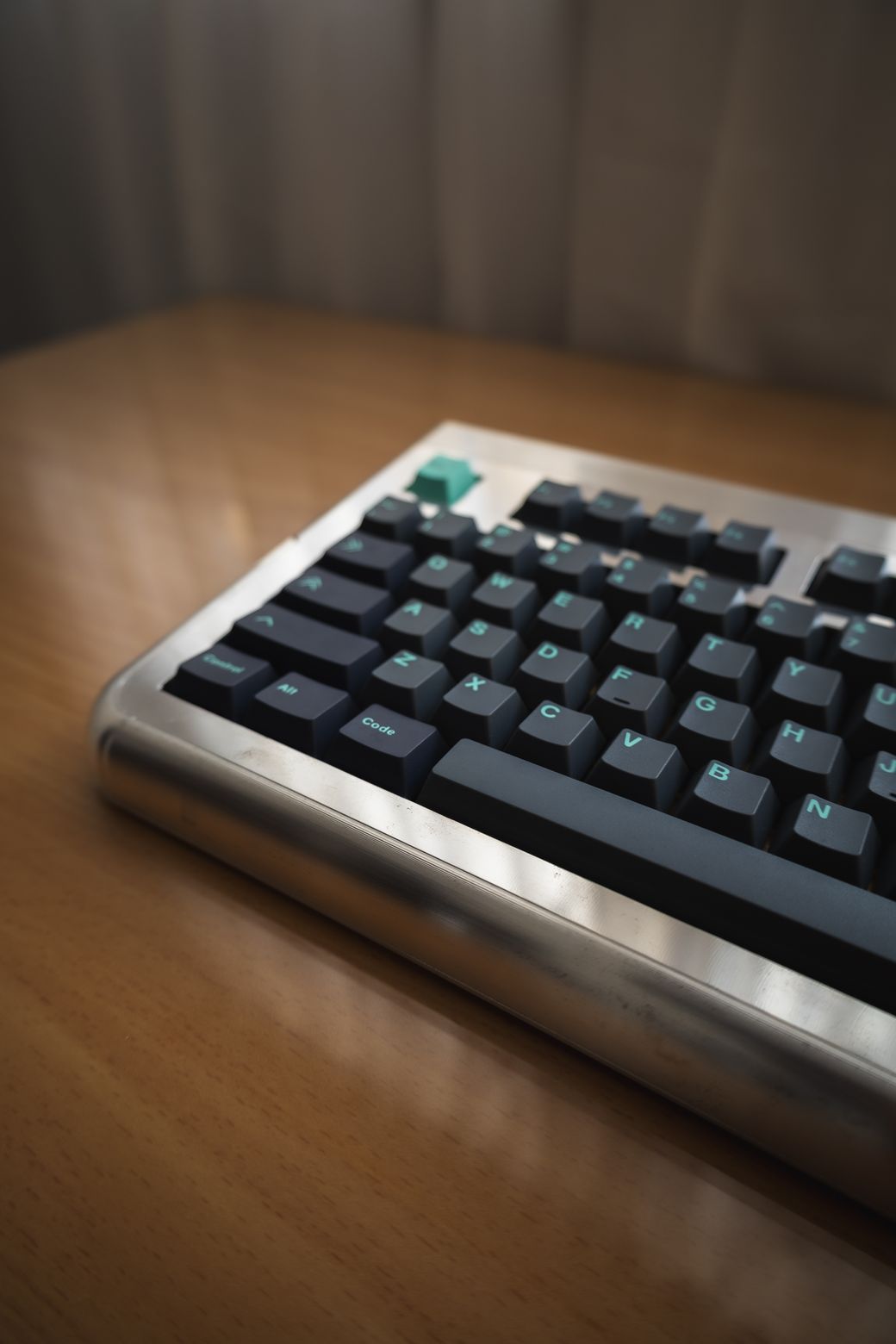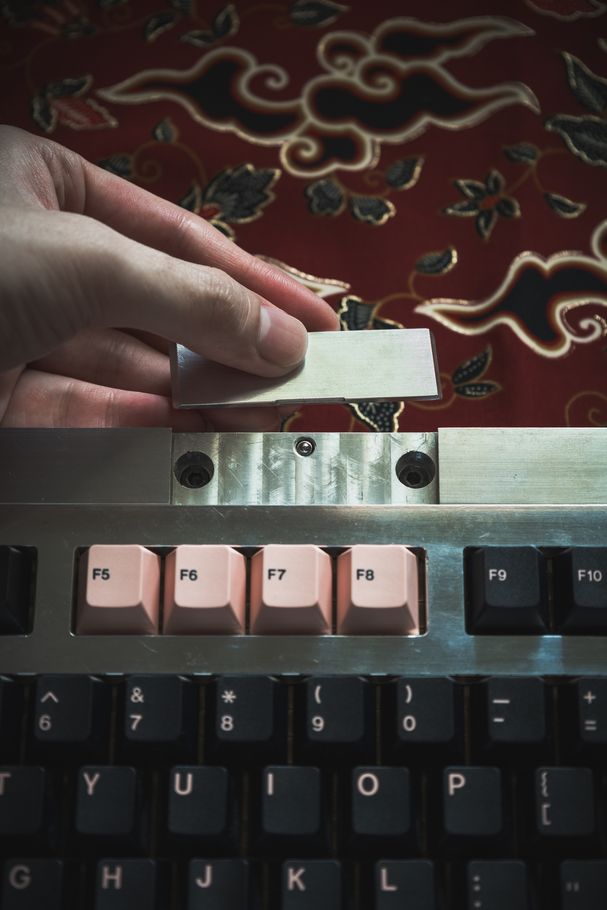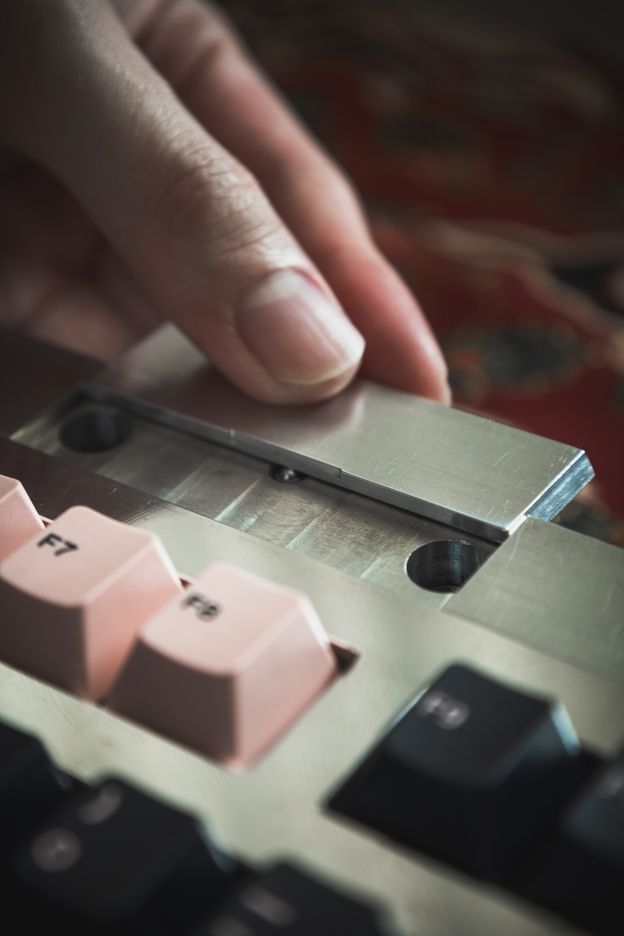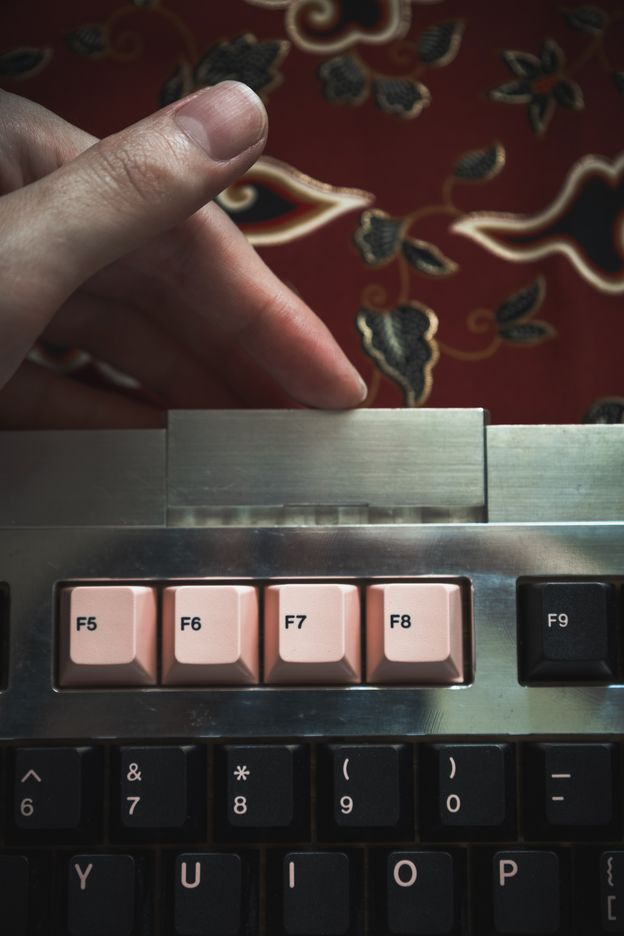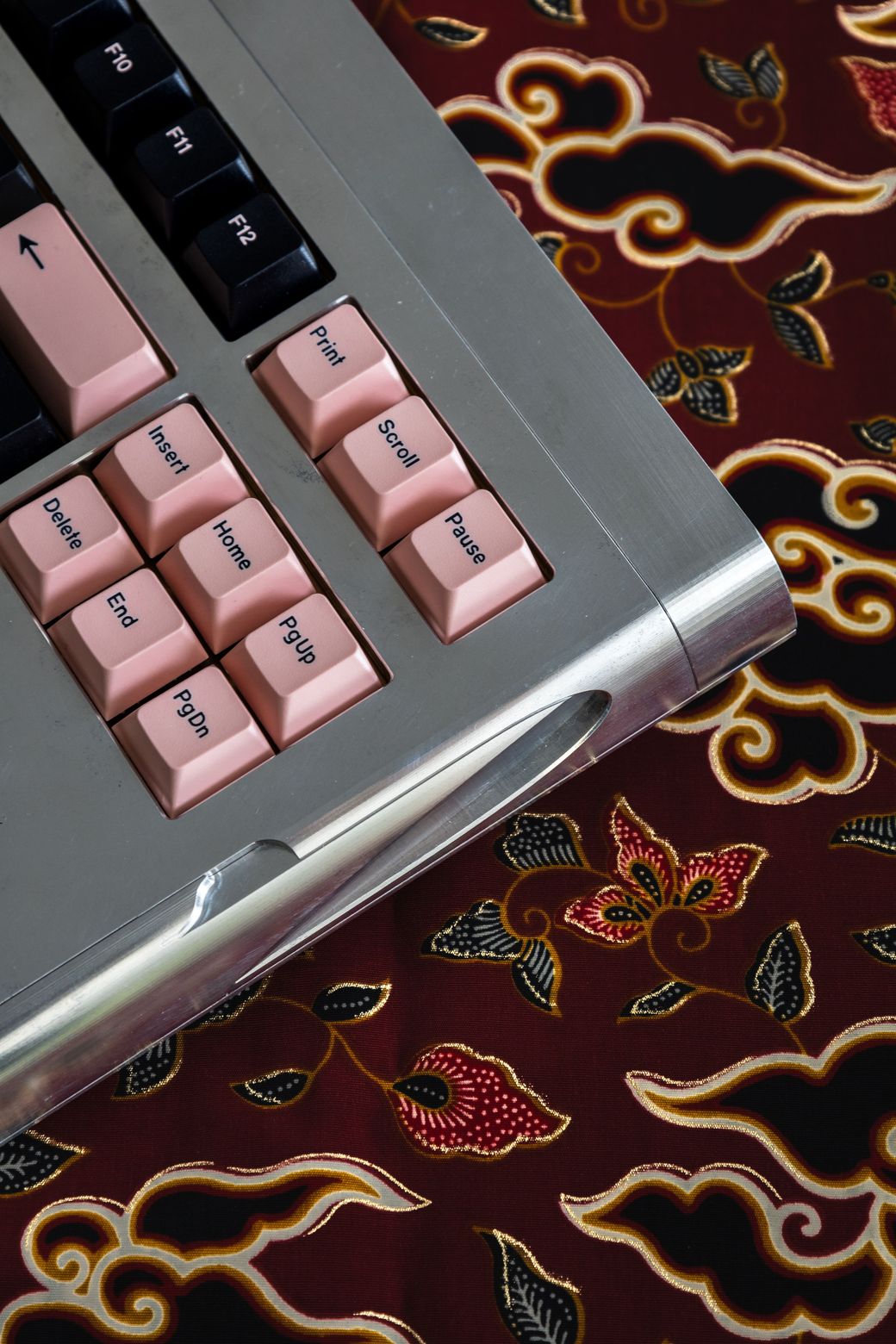
Uncoated prototype photo. Machined aluminum parts.
A preface by Dominus, a Keebtalk member:
In a modern world of compact keyboards and thin-bezel designs, this post might just be about making the last dance of a wide-bezel retro-futuristic keyboard design come true.
Check the sound test video here:
Typing test videos.
Here are some uncoated prototype photos. The parts are fresh off the machining bed. A fully anodized prototype coming soon!
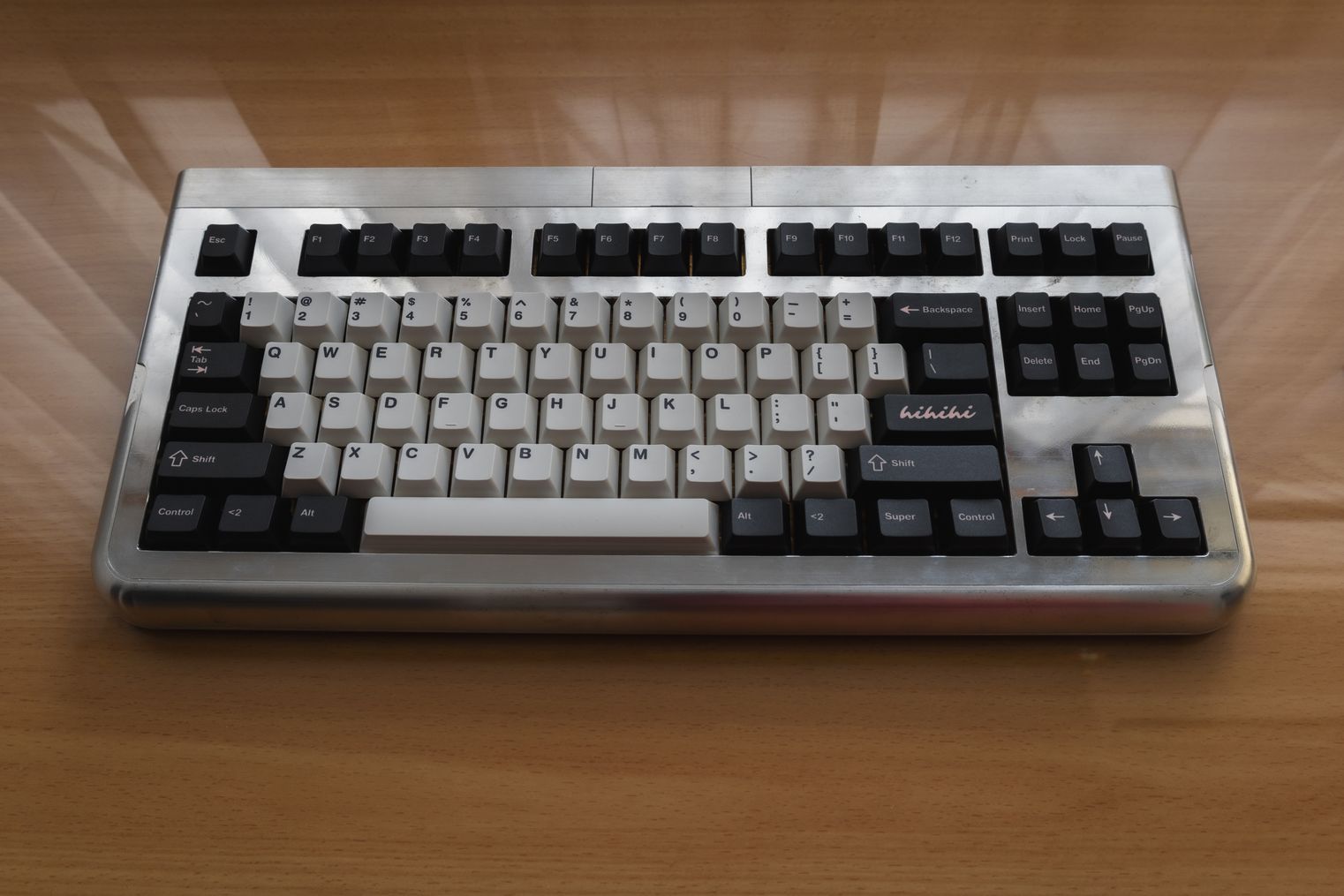
I've been working on designing a screwless keyboard. Close friends and family members have been part of this journey from the very beginning. Each of us has an ideal workstation dream with one thing in common: it must begin with a proper keyboard as a daily driver. We are all interested in finding a sought-after 'endgame' keyboard (acknowledging that such a notion is elusive in this hobby). It is too late for us to join many legendary keyboard GBs. Other than that, many pre-owned keyboard prices in the wild are not appealing enough to us. In addition, my motivation is to get rid of my aluminum tray mount keyboard which has already reached its plateau of modification.
This design has a thick plate (3.5 mm to be precise). It is perfectly stable and hefty for a solid typing experience. A firmer plate with little cushioning is more comfortable for many, including us. For mounting, I go for the gasket mount. I chose this mounting method for this design because it has been proven successful in our community, and many great-sounding designs use it. Not like many other gasket mount designs, the plate is not compressed. The housing with bolt joints does not compact (stiffen) the gasket. The plate just sits on top of the gasket and a few cushions on the wall keep it centered and not touching the housing, maximizing its capability and lowering the vibration transmissibility from the plate to the rest. In simple words, it’s just an isolated gasket mount keyboard.
Quick overview:
- Offering aircraft-grade aluminum alloy (Al-Mg-Si) and brass (CuZn) as primary material options (custom material requests are welcome!).
- Three surface texture options. (raw, fine-grit beadblasted, and polished texture)
- High-profile enclosure’s wall. (there are some render pictures with artisan keycap for reference)
- No exposed screws. We designed a small plate to hide the screws like a hotshoe cover on a camera with a metal ball plunger that serves as a lock.
- A hefty monolithic bottom part is designed to avoid internal or external weight addition.
- Solder and hot-swap options PCB with VIA and QMK compatibility + type-C DB with ESD protection.
- It is a quiet design with various layout mods; no OLED display or badge gimmick.
My personal description about the sound test with no foam mod or tape mod:
I use the Logitech G304 as a reference, which has a noise level of about 47 dB. For the switch, I used Gateron Milky Yellow pro. The average noise level from the sound test is 43 dB.
- It produces a very muted sound in terms of amplitude and has a noticeably deep clacky sound character in terms of frequency.
- Way quieter than a normal aluminum and FR4 plate but quite similar to a polycarbonate plate.
- Thockier than normal FR4 and but it is noticeably clackier than flex-cut polycarbonate plates.
- But not as creamy and thocky as POM plates. It still sits on clacky sound region.
- It has the 'roomy' character of vintage keyboards, but it's not dominant—just a very subtle hollowness that decays quickly and didn’t notice any pingy aluminum-ish noise at all.
This marks the end of the project's preface. In future publications, we will use "we" and "us" instead of "I" and "me" to refer to Intinavas as the legal institution.
Be sure to check out our Instagram highlights, folks! We will be sharing simple sound tests, packaging designs, CNC machining video clips, updates, and much more.
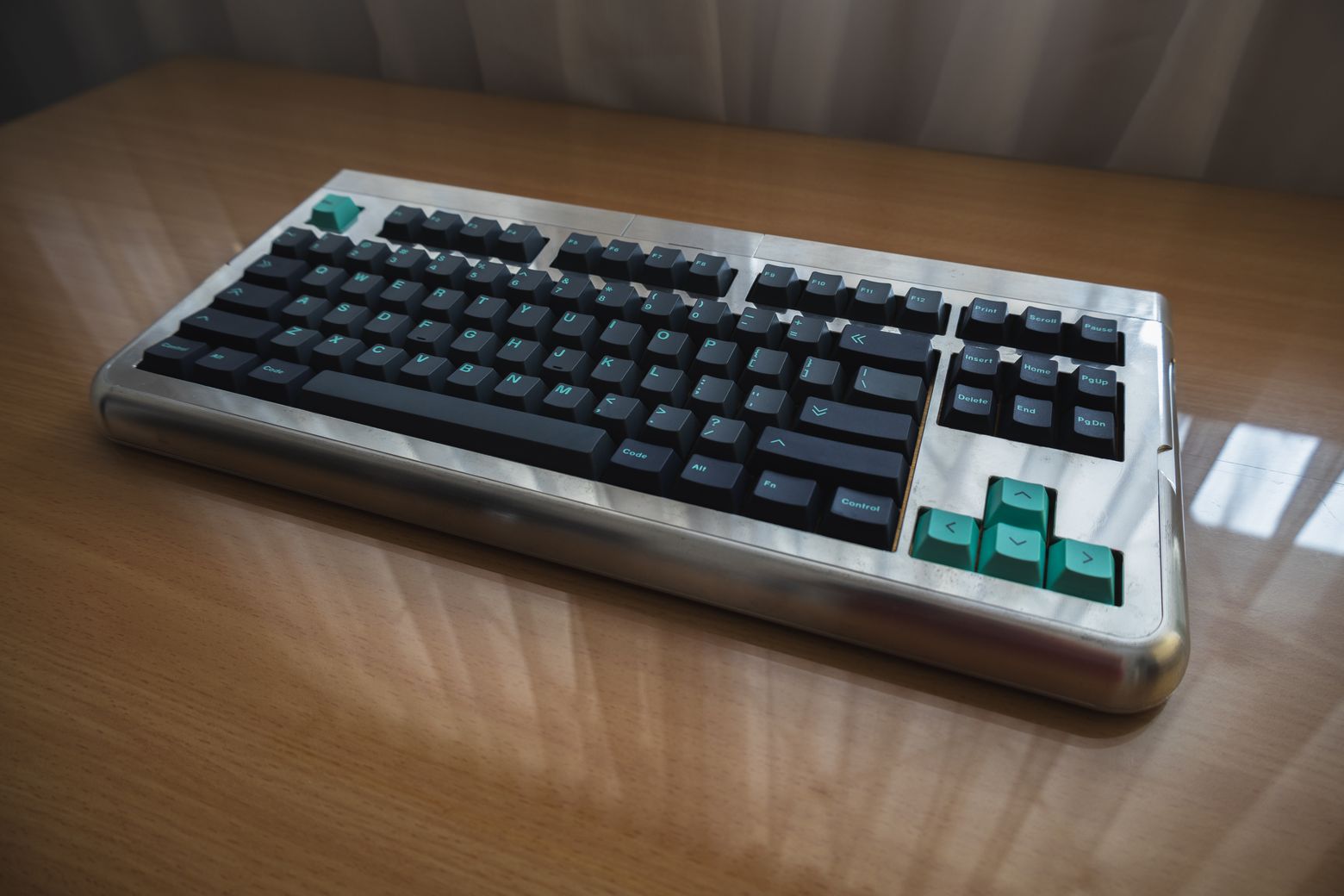
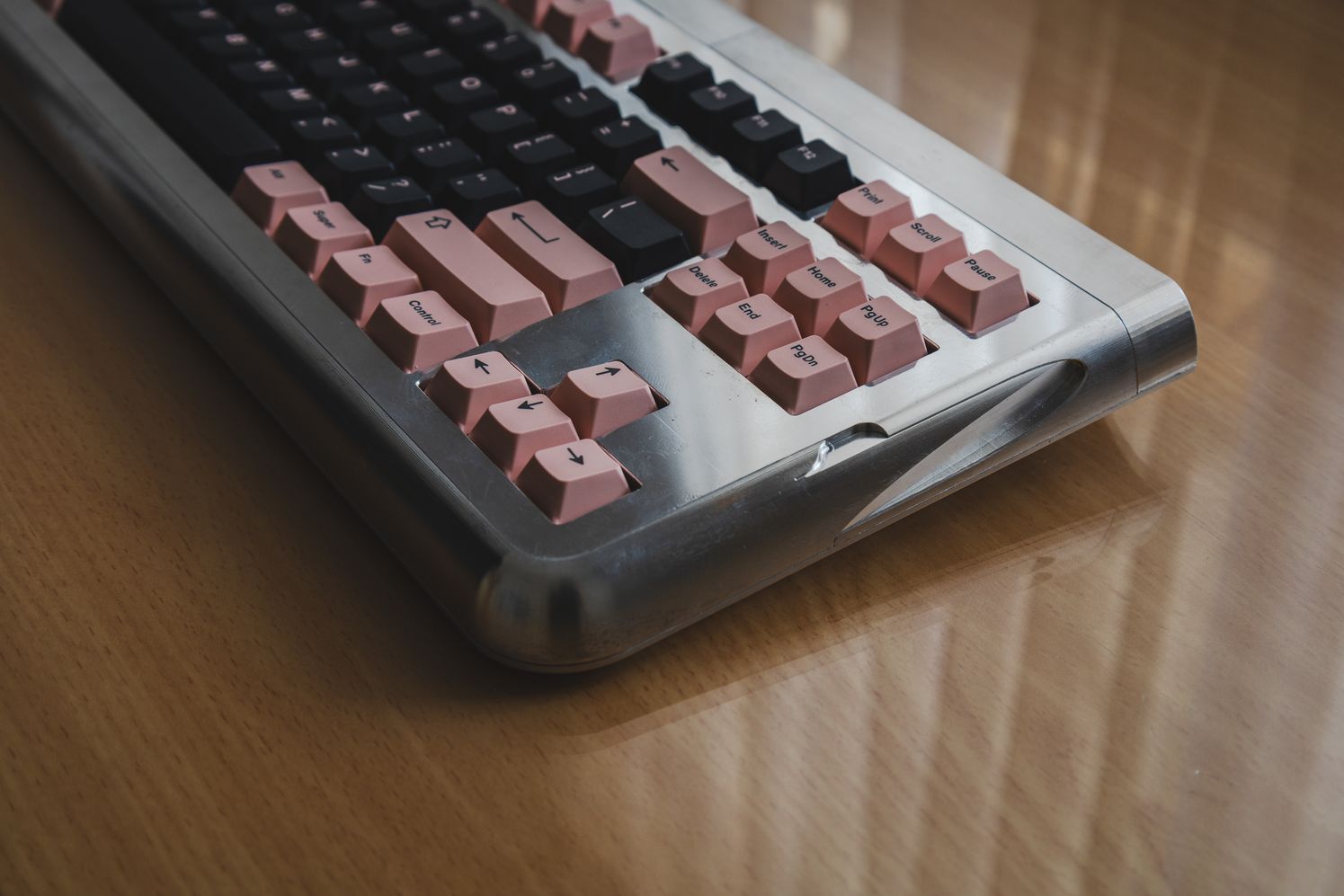
Other perspectives

